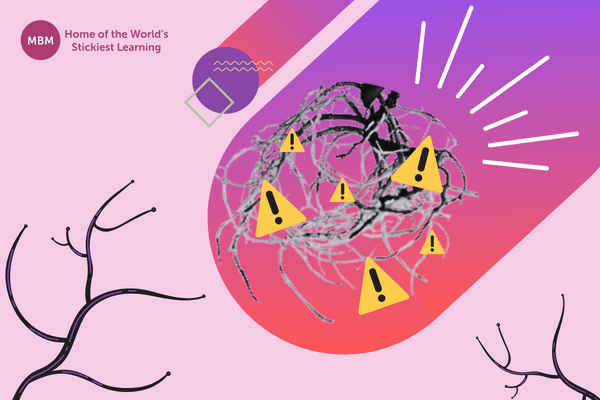Navigating a World of Hidden Agendas and Veiled Insults
Picture this: You’re engaged in a conversation with a colleague, discussing an upcoming project, when out of nowhere, they deliver a seemingly innocent remark that leaves you questioning your competence. Welcome to the realm of passive-aggressive behaviour, where hidden agendas and veiled insults reign supreme.
Passive-aggressive behaviour is a puzzling aspect of human interaction that often goes unnoticed. It involves subtle actions, hidden meanings, and disguised intentions, making it difficult to identify and address. In this article, we will explore the depths of passive aggression, demystify its definition, and shed light on the intriguing characteristics that define this elusive behaviour.
Definition and Characteristics of Passive-aggressive Behaviour
Passive-aggressive behaviour refers to a pattern of indirect resistance, hostility, or negativity expressed indirectly or covertly. It involves subtle but purposeful actions or words that convey anger, resentment, or dissatisfaction without openly confronting the issue.
This behaviour often stems from a fear of confrontation or a desire to maintain a sense of control. Common characteristics of this pattern of behaviour include sarcasm, subtle insults, procrastination, intentional forgetfulness, and silent treatment.


>> Mental Health Coaching Card <<
The Psychology Behind
Passive-aggressive behaviour is rooted in complex psychological dynamics. It can be a defence mechanism used by individuals who feel powerless or fear the consequences of expressing their true feelings or needs openly. Often, underlying emotions such as anger, frustration, or hurt are masked by seemingly innocent or ambiguous actions. The passive-aggressive person may harbour a fear of rejection or conflict, leading them to express their emotions indirectly. Unresolved anger and unresolved issues from the past can also contribute to the development of passive-aggressive behaviour patterns.
Common Signs and Examples of Passive-aggressive Behaviour

Passive-aggressive behaviour can manifest in various ways, making it crucial to recognise the signs. One common sign is the habit of making sarcastic or backhanded remarks that appear harmless on the surface but carry underlying negative meanings. Another sign is the consistent avoidance of responsibility or tasks, often through procrastination or intentional inefficiency. Giving silent treatment or withdrawing emotionally from interactions are also indicative of passive-aggressive behaviour. Additionally, frequently agreeing outwardly but sabotaging or undermining others’ efforts behind the scenes can be another manifestation of this behaviour.
Sticky Learning ® is 7 times more effective than 1-day training courses. Plus, you will get a Chain of Evidence proving your Return on Investment. Discover soft skills training that changes behaviours long term.

Types of Passive-aggressive Behaviour:
#1- In Relationships:
Passive-aggressive behaviour often emerges within personal relationships, causing significant strain and conflicts. In relationships, it can manifest as subtle acts of resistance or defiance, such as repeatedly forgetting important dates or commitments, intentionally withholding affection or attention, or engaging in subtle acts of sabotage. Passive-aggressive individuals may employ silent treatment or use sarcasm and veiled insults to express their dissatisfaction or anger. This behaviour undermines trust, communication, and emotional intimacy, leading to increased tension and frustration between partners, family members, or close friends.
#2- In the Workplace:
Passive-aggressive behaviour can also infiltrate the professional sphere, affecting workplace dynamics and productivity. In the workplace, passive-aggressive individuals may demonstrate resistance to authority or work expectations through subtle means. They may consistently miss deadlines, provide incomplete or inadequate work, or deliberately procrastinate on important tasks. This pattern of behaviour in the workplace can create a toxic atmosphere, diminish team cohesion, and hamper effective collaboration. It can also undermine the reputation and credibility of the individual engaging in such behaviour, potentially leading to career setbacks.
#3- In Social Settings:
Passive-aggressive behaviour is not limited to close relationships or work environments; it can also manifest in social settings. In social situations, passive-aggressive individuals may employ indirect or covert means to express their displeasure or discomfort. This can include making snide or critical remarks disguised as jokes, exhibiting a dismissive or condescending attitude, or deliberately excluding others from activities or conversations. This pattern of behaviour in social settings can create tension, breed resentment, and strain friendships or group dynamics. It may lead to misunderstandings, hurt feelings, and a breakdown in open communication and trust.
Causes and Triggers of Passive-aggressive Behaviour:

#1- Childhood Experiences and Upbringing
Childhood experiences and upbringing play a significant role in the development of passive-aggressive behaviour. Children who grow up in environments where open expression of emotions is discouraged or punished may learn to suppress their feelings. They might witness this kind of behaviour modelled by their parents or caregivers, leading them to adopt similar coping mechanisms. Additionally, inconsistent or overly strict parenting styles can create a sense of powerlessness and frustration, which can contribute to passive-aggressive tendencies later in life. Traumatic experiences or neglect during childhood can also shape a person’s emotional responses and increase the likelihood of engaging in passive-aggressive behaviour.
#2- Personality Traits and Disorders Associated With Passive-aggressive Behaviour
Certain personality traits and disorders are associated with an increased tendency toward passive-aggressive behaviour. Individuals with low self-esteem, a fear of conflict, or an excessive need for control may resort to passive-aggressive tactics as a way to exert power or protect themselves emotionally. People with passive-aggressive personality disorder (PAPD) exhibit a pervasive pattern of passive resistance, stubbornness, and negative attitudes. They may habitually procrastinate, resist fulfilling tasks, and express their frustrations indirectly. It’s essential to note that not all individuals with these traits or disorders will engage in passive-aggressive behaviour, but these factors can contribute to its manifestation.
#3- Environmental Factors That Contribute to Passive-aggressive Behaviour
Environmental factors can significantly influence the development of passive-aggressive behaviour. Stressful or oppressive environments, such as dysfunctional families, toxic workplaces, or abusive relationships, can exacerbate passive-aggressive tendencies. In such environments, individuals may feel unsafe or powerless to express their true emotions openly. Fear of rejection, conflict, or punishment may drive them to adopt passive-aggressive behaviours as a means of self-preservation. Moreover, cultures or societies that discourage open confrontation or prioritise saving face can contribute to the prevalence of passive-aggressive behaviour as an alternative method of expressing dissatisfaction or disagreement.
Recognising Passive-aggressive Behaviour at Work

#1- Subtle Insults and Sarcasm
Passive-aggressive behaviour in the workplace often involves the use of subtle insults or sarcasm as a means of expressing dissatisfaction or frustration. This can include making snide remarks disguised as jokes, using sarcastic tones or body language, or employing veiled insults that are hard to detect.
For example, a passive-aggressive colleague might say, “Oh, you finally finished that report? Took you long enough,” with a sarcastic smile. These subtle insults can create tension and erode trust among team members while leaving the recipient feeling undermined or belittled.
#2- Intentional Procrastination and Resistance
Another manifestation of passive-aggressive behaviour at work is intentional procrastination or resistance to fulfilling tasks or responsibilities. Passive-aggressive individuals may consistently delay or avoid completing their assigned work, creating bottlenecks in projects or causing inconvenience for their colleagues. They may make excuses, feign forgetfulness, or engage in other behaviours that hinder progress. For instance, a team member may consistently miss deadlines or intentionally delay sharing crucial information, impeding the productivity and success of the entire team.
#3- Backhanded Compliments and Undermining Actions
Passive-aggressive behaviour can also be observed through backhanded compliments and undermining actions. This involves expressing praise or appreciation on the surface while subtly undermining the person or their work.
For example, a passive-aggressive coworker might say, “You did a good job on that presentation, considering how unprepared you seemed.” These comments diminish the person’s achievements and create an atmosphere of subtle negativity. Additionally, passive-aggressive individuals may engage in actions that undermine their colleagues, such as intentionally excluding them from meetings or important discussions.
The Negative Impact of Passive-aggressive Behaviour on Work Culture
1- Undermining Trust and Collaboration
Passive-aggressive behaviour in the workplace has a detrimental impact on trust and collaboration among team members. When individuals engage in passive-aggressive tactics, it creates an atmosphere of uncertainty and erodes trust. Team members become hesitant to rely on each other or share information openly, fearing potential hidden agendas or hidden meanings in their interactions. Collaboration suffers as communication becomes guarded and superficial, hindering the exchange of ideas and inhibiting teamwork. The lack of trust and collaboration leads to silos within the organisation, preventing the collective achievement of goals and stifling innovation.
2- Communication Breakdowns and Misinterpretations
Passive-aggressive behaviour disrupts effective communication within the work environment. The indirect and ambiguous nature of passive-aggressive tactics can lead to misunderstandings and misinterpretations among colleagues. Subtle insults or sarcastic remarks can be easily misconstrued, leading to tension and conflict. As communication breaks down, critical information may be withheld, deadlines may be missed, and important details may be overlooked. This breakdown in communication further deteriorates work relationships, impairs decision-making processes, and hampers overall productivity.
3- Increased Stress and Toxic Work Environment
Passive-aggressive behaviour contributes to increased stress levels and the creation of a toxic work environment. Constant exposure to passive-aggressive tactics, such as backhanded compliments or intentional procrastination, creates a sense of unease and hostility among employees. This toxic atmosphere negatively impacts employee morale, engagement, and job satisfaction. The stress caused by this pattern of behaviour can also lead to physical and mental health issues, such as anxiety and burnout. Moreover, the toxic work environment resulting from covert aggression can have a detrimental impact on employee retention, as talented individuals may seek healthier work environments elsewhere.
Dealing With Passive-aggressive Behaviour

#1- Strategies for Confronting Passive-aggressive Behaviour:
Confronting passive-aggressive behaviour requires a tactful and assertive approach. It is crucial to address the behaviour directly but without escalating the conflict further. Start by choosing an appropriate time and place for a conversation, ensuring privacy and minimal distractions. Use “I” statements to express how the behaviour affects you and your emotions, avoiding accusations or blame. Encourage open and honest communication, allowing the passive-aggressive individual to express their thoughts and feelings as well. Seek mutual understanding and work towards finding constructive solutions together. Setting clear boundaries and expectations can also help curb passive-aggressive tendencies.
#2- Effective Communication Techniques to Address the Issue:
Effective communication is essential when dealing with passive-aggressive behaviour. Practice active listening to demonstrate your genuine interest and understanding. Use assertive communication techniques to express your needs, thoughts, and concerns clearly and directly. Avoid being defensive or engaging in a power struggle. Focus on the specific behaviours or incidents rather than attacking the individual’s character. By remaining calm and composed, you can model healthy communication and encourage the passive-aggressive person to express themselves more openly. Remember, open dialogue and empathy are key to fostering understanding and resolving conflicts.
#3- Seeking Professional Help and Therapy for Passive-aggressive Tendencies:
In some cases, addressing passive-aggressive behaviour may require the assistance of a mental health professional. Therapists or counsellors can help individuals explore the underlying causes and triggers of their passive-aggressive tendencies. Through therapy, individuals can gain insights into their emotions, develop healthier coping mechanisms, and learn effective communication and conflict-resolution skills. Cognitive-behavioural therapy (CBT) and dialectical behaviour therapy (DBT) are often beneficial in treating this pattern of behaviour. Seeking professional help can provide a supportive and structured environment for individuals to overcome their passive-aggressive tendencies and foster healthier relationships.
Preventing Passive-aggressive Behaviour

#1- Promoting Open and Honest Communication in Relationships
One of the key ways to prevent passive-aggressive behaviour is by fostering open and honest communication in relationships. Encourage an environment where individuals feel safe expressing their thoughts, feelings, and needs without fear of judgment or reprisal. Emphasise the importance of active listening and validating each other’s emotions. Establish regular check-ins or designated times for open discussions to address any concerns or conflicts that may arise. By creating a foundation of trust and respect, individuals are more likely to communicate directly and honestly, reducing the need for passive-aggressive behaviours as a means of expression.
#2- Creating a Supportive and Respectful Work Environment
In the workplace, promoting a supportive and respectful environment is essential in preventing covert aggressive behaviour. Encourage clear and transparent communication channels, where employees feel comfortable expressing their opinions and concerns openly. Foster a culture of respect, collaboration, and constructive feedback. Provide opportunities for conflict resolution training and emotional intelligence development to enhance interpersonal skills. Additionally, leaders and managers should lead by example, modelling healthy communication and conflict resolution strategies. By creating a positive work environment, passive-aggressive behaviours are less likely to emerge and negatively impact productivity and employee well-being.
#3- Teaching Emotional Regulation and Conflict Management Skills From a Young Age
Preventing passive-aggressive behaviour begins with early intervention and education. It is crucial to teach children and young individuals emotional regulation and healthy conflict management skills. Encourage them to identify and express their emotions constructively. Teach active listening, empathy, and negotiation skills to facilitate effective communication and conflict resolution. Provide opportunities for children to practice assertiveness, understanding their own needs while respecting others. By equipping young individuals with these vital skills, they will be better prepared to navigate relationships and handle conflicts directly, reducing the likelihood of resorting to this kind of behaviour.
Case Studies of Notable Passive-aggressive Individuals
Examining case studies of famous individuals who have exhibited passive-aggressive behaviours can provide valuable insights into the dynamics and consequences of such behaviour. For instance, historical figures like Marie Antoinette, known for her dismissive and subtly defiant attitude towards societal norms and expectations, exemplified passive-aggressive tendencies.
Additionally, in the realm of popular culture, characters like Dwight Schrute from “The Office” or Sheldon Cooper from “The Big Bang Theory” portray fictional examples of passive-aggressive behaviour, often employing sarcasm, manipulation, and indirect expressions of anger or dissatisfaction. By studying these examples, readers can gain a deeper understanding of how passive-aggressive behaviour can manifest in various contexts and its impact on relationships and communication.
Conclusion
In conclusion, passive-aggressive behaviour in the workplace is a destructive force that undermines trust, communication, and collaboration among team members. By recognising the subtle signs and tactics of this type of behaviour, individuals can take proactive steps to address and prevent its negative impact. The detrimental effects of passive-aggressive behaviour include decreased productivity, increased stress, and the creation of a toxic work environment.
All in all, organisations must promote open and direct communication, foster a culture of respect and accountability, and provide resources and support for addressing and managing passive-aggressive behaviour. By doing so, workplaces can cultivate an environment of trust, collaboration, and productivity, ensuring the well-being and success of their employees and the organisation as a whole.




